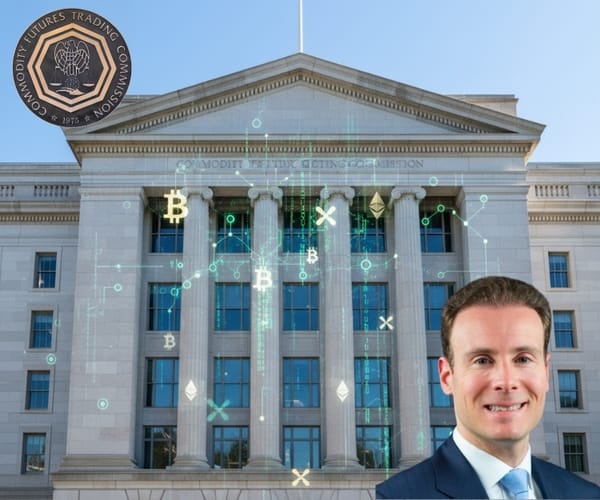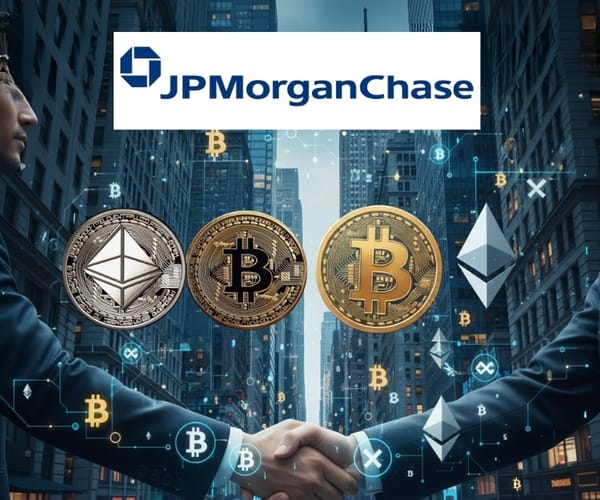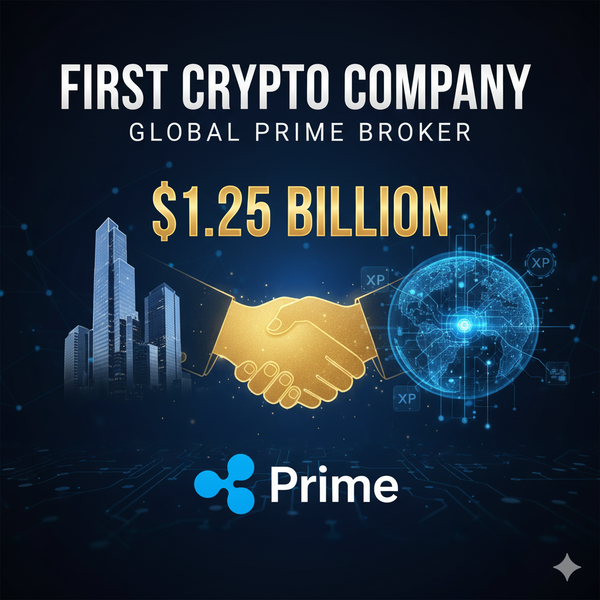The Flare-XRP Alliance: How FLR Networks Could Unlock XRP's True Potential
As regulatory clarity emerges for digital assets in the United States, the strategic partnership between Flare Networks (FLR) and Ripple's XRP ecosystem is positioning both tokens for unprecedented growth.

Flare Networks CEO's bold statement "No FXRP without FLR. No XRPFi without FXRP" reveals the deep symbiotic relationship between two of crypto's most promising ecosystems.

As regulatory clarity emerges for digital assets in the United States, the strategic partnership between Flare Networks (FLR) and Ripple's XRP ecosystem is positioning both tokens for unprecedented growth. With over 88,000 views on Flare Networks' recent social media post emphasizing this connection, the crypto community is taking notice of what could be the most important alliance in decentralized finance.
The Foundation: FXRP as XRP's DeFi Gateway
At the heart of this relationship lies FXRP—Flare's wrapped version of XRP that enables the traditionally isolated XRP Ledger to participate in decentralized finance applications. Unlike XRP, which operates on its own consensus mechanism and lacks native smart contract functionality, FXRP brings XRP's liquidity and utility into Flare's Ethereum Virtual Machine-compatible ecosystem.
This wrapping mechanism solves a critical limitation: while XRP excels at fast, low-cost cross-border payments, it has been largely excluded from the explosive growth of DeFi protocols, yield farming, and advanced financial instruments that have driven much of crypto's recent innovation. FXRP changes this dynamic entirely.
The Flare CEO's statement "No FXRP without FLR" highlights the foundational role of FLR tokens in enabling this bridge. FLR serves as both the native gas token for Flare Network operations and the governance token for the ecosystem, making it essential infrastructure for any XRP holder wanting to access DeFi opportunities.
XRPFi: The Emerging Ecosystem Revolution
"XRPFi"—the burgeoning DeFi ecosystem built around XRP and FXRP—represents a paradigm shift for XRP utility. Traditional XRP use cases centered on remittances and institutional payment rails. XRPFi expands this to include:
- Automated Market Making: FXRP can be paired with other assets in liquidity pools
- Yield Generation: XRP holders can earn returns through lending protocols and staking mechanisms
- Cross-Chain Interoperability: Bridge XRP value to other blockchain ecosystems
- Advanced Trading: Access to sophisticated DeFi trading instruments and derivatives
The second part of the CEO's statement—"No XRPFi without FXRP"—emphasizes that this entire ecosystem depends on the wrapped token infrastructure that Flare provides. Without FXRP, XRP remains trapped in its own ledger, unable to participate in the broader DeFi revolution.
Mutual Value Creation: How FLR Enhances XRP
The relationship creates multiple value feedback loops that benefit both ecosystems:
For XRP Holders:
- Expanded Utility: Access to DeFi yields without selling XRP positions
- Liquidity Enhancement: FXRP trading pairs increase overall XRP market depth
- Risk Management: Ability to hedge XRP positions using DeFi instruments
- Passive Income: Staking and lending opportunities previously unavailable
For FLR Token Holders:
- Network Effects: XRP's massive holder base drives Flare Network adoption
- Transaction Volume: Every FXRP interaction generates FLR gas fees
- Governance Value: Larger ecosystem increases FLR governance token importance
- Infrastructure Demand: More XRP integration requires more FLR network capacity
Regulatory Synergy in the New Era
The timing of this alliance couldn't be better. With the GENIUS Act creating clear stablecoin frameworks and SEC Chairman Paul Atkins announcing "Project Crypto" to modernize digital asset regulations, both XRP and FLR are positioned to benefit from regulatory clarity.
XRP's utility token status, strengthened by recent legal developments, combined with Flare's compliant DeFi infrastructure, creates a regulatory-friendly pathway for institutional adoption. Traditional financial institutions can now consider XRP exposure through FXRP protocols while maintaining compliance with evolving U.S. regulations.
XRP Analysis: The Flare Factor in Price Potential
Immediate Benefits:
- Demand Pressure: Converting XRP to FXRP creates buying pressure while reducing circulating supply
- Utility Premium: DeFi functionality adds intrinsic value beyond payment use cases
- Institutional Interest: Regulated DeFi access could attract traditional finance
Strategic Positioning: Flare Networks provides XRP with something it has lacked since inception: programmability without compromising the XRP Ledger's core efficiency. This positions XRP to compete not just with other payment tokens, but with entire DeFi ecosystems like Ethereum.
Market Impact Projections: If XRPFi achieves even 10% of Ethereum's DeFi total value locked (TVL), the demand for FXRP—and by extension XRP—could drive significant price appreciation. Conservative estimates suggest this synergy could contribute to XRP reaching $5-15 by 2030, assuming successful ecosystem development and continued regulatory clarity.
The Network Effect Amplification
The true power of the FLR-XRP relationship lies in network effects. As more XRP holders discover FXRP opportunities, Flare Network activity increases, making FLR more valuable and enabling better infrastructure for even more sophisticated XRP applications. This creates a virtuous cycle where success in one ecosystem directly amplifies success in the other.
Moreover, Flare's focus on bringing utility to other "sleeping" cryptocurrencies means XRP is just the beginning. As Flare expands to wrap other major tokens, XRP holders gain access to an ever-growing universe of cross-chain DeFi opportunities.
Conclusion: Two Tokens, One Destiny
The Flare Networks CEO's statement reveals a fundamental truth about the evolving crypto landscape: isolated blockchain ecosystems are giving way to interconnected, mutually beneficial networks. The FLR-XRP alliance represents the future of cryptocurrency—where different tokens and protocols work together to create value far greater than the sum of their parts.
For investors, this means that XRP and FLR should be viewed not as competing investments, but as complementary positions in what could become crypto's most successful symbiotic relationship. As regulatory frameworks solidify and DeFi continues its mainstream march, the tokens that enable cross-ecosystem functionality—like FLR and FXRP—may prove to be the most valuable assets of all.
The message is clear: in the new era of interconnected DeFi, XRP needs FLR to reach its full potential, and FLR needs XRP to achieve maximum network adoption. Together, they're not just building a bridge between ecosystems—they're constructing the foundation for crypto's next growth phase.
DISCLAIMER: This newsletter is for informational purposes only and does not constitute investment advice or a recommendation to buy, sell, or hold any securities. Investments in cryptocurrencies or other financial assets carry significant risks, including the potential for total loss, extreme volatility, and regulatory uncertainty. Past performance is not indicative of future results. Always consult a qualified financial professional and conduct thorough research before making any investment decisions.



